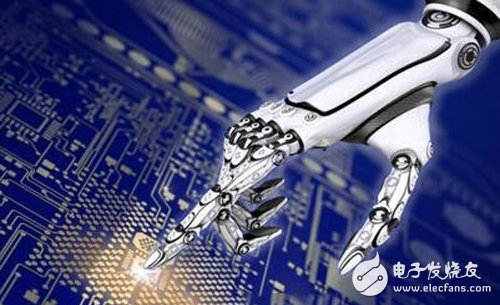[ China's intelligent manufacturing network market analysis ] market expansion, capacity upgrade, the robot industry ushered in "spring." Although the industrial development has broad prospects, the overall pattern of “small, weak and scattered†of the domestic robot industry has not changed, the standard system needs to be improved, and independent innovation of key components still needs to be broken. The opportunities and challenges of domestic robot development coexist.
Independent technology only accounts for 30% of domestic robots.
China has become the world's largest industrial robot market for several consecutive years, with an annual output of over 60,000 units. The “China Speed†of about 3,000 new robot manufacturers in 5 years has amazed the world, and many experts have expressed concern: more enterprises, robots “ The fire is gone, but the hidden dangers of low-level and repeated construction emerge.Can domestic robots be satisfactory? From the 13th to the 16th at the 2016 China Robot Industry Promotion Conference held in Wuhu, Anhui Province, Sun Feng, deputy director of the Equipment Industry Department of the Ministry of Industry and Information Technology, said: Although the industry has broad prospects for development, the domestic robot industry is “small, weak and scatteredâ€. The overall pattern has not changed, the domestic robot standard system needs to be improved, and the independent innovation of key components still needs to be broken. The opportunities and challenges of domestic robot development coexist.

5 In 3000 the new company: "standard construction, basic research" is a key <br> <br> market expansion, capacity upgrades, the robot industry usher in "spring." According to the National Bureau of Statistics, from January to November this year, China's industrial robot production was 64,000 units, an increase of more than 90% over the full year of 2015. In just five years, China’s robot manufacturing companies have grown by nearly 3,000.
Qu Daokui, chairman of the China Robot Industry Alliance, said that robot products should be interconnected and technically unified. "So many robot companies have grown up, and if there is no industry standard, it is difficult to coexist and develop."
The robot industry is developing at a high speed, but the relevant standards have not yet formed a system. At the conference, the China Robotics Industry Alliance released several industrial robot standards and began to develop a number of standard systems including service robots, in an effort to guide enterprises to strengthen their core competitiveness through standardization.
“To achieve certain standards, the market recognizes robots, which in turn encourages companies to upgrade their technological capabilities.†Cai Ronghua, deputy director of the Industry Coordination Department of the National Development and Reform Commission, pointed out that it is necessary to continue to improve the robot testing and certification system, promote the adoption of certification results, and guide market consumption. Behavior, realizing self-discipline in the industry and forming a social consensus.
At the same time, the future development of Chinese robots is inseparable from the support of basic theory and core independent technology. “Without the basic research, the development of robots cannot be broken.†Ding Han, an academician of the Chinese Academy of Sciences and dean of the School of Mechanical Science and Engineering at Huazhong University of Science and Technology, said that manufacturing, rehabilitation and national defense security are the three directions that China’s robot development needs to focus on in the future.
Only 30% of independent technology, when key components break through?
An eight-axis linkage welding robot accurately controls the automatic welding of different angles of the workpiece by controlling the displacement, and can rotate the various welds of the welded workpiece to the optimal position. The innovative products of industrial robots exhibited by Guangzhou CNC Equipment Co., Ltd. at the conference were praised by the viewers.
In 2006, Guangzhou CNC Equipment Co., Ltd., which entered the industrial robot industry, relied on independent innovation. After several years of research and development, it has mastered the complete independent intellectual property rights of key components such as robot controllers and servo motors, enabling the enterprise's robot business to follow the previous "Become a "leader".
According to relevant data, the domestic multi-joint robots sold a total of 6,225 units in the first half of the year, accounting for 32.3% of the total sales of industrial robots, and the proportion continued to increase. Among the four components of industrial robots, the cost of the robot body only accounts for 22% of the total cost, while the cost of the core components of the robot, such as the reducer and controller, accounts for nearly half of the total cost of the robot.
The core components determine the performance, quality and price of the product. Experts pointed out that the key components rely on imports, resulting in the cost of domestic robots lacking a competitive advantage in the international arena.
RF Coaxial Connector,RF QMA Connector,RF FME Coaxial Cable Connector,Wire Solder Type RF Connectors
Xi'an KNT Scien-tech Co., Ltd , https://www.honorconnector.com